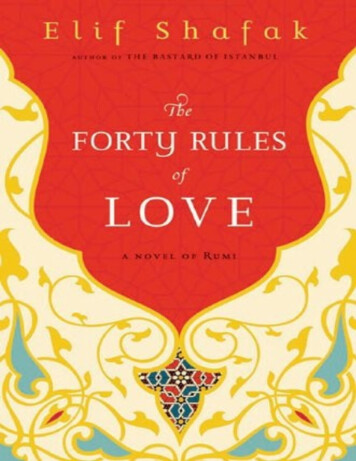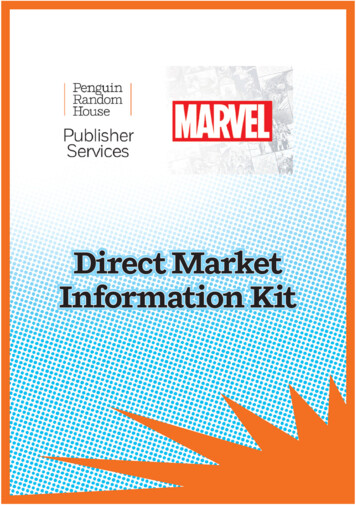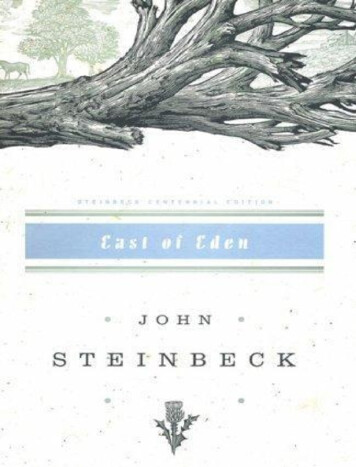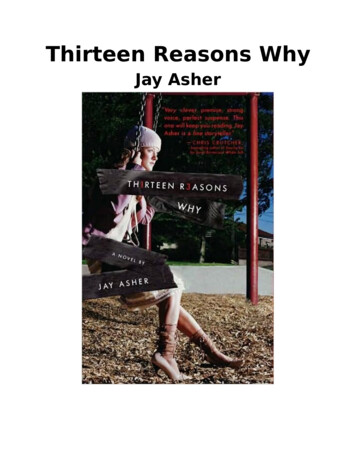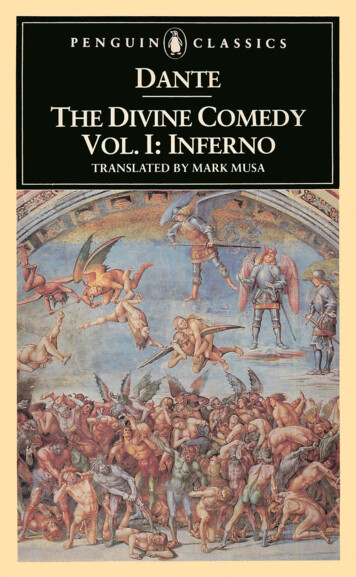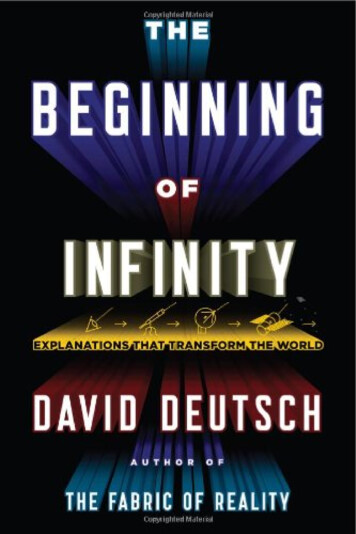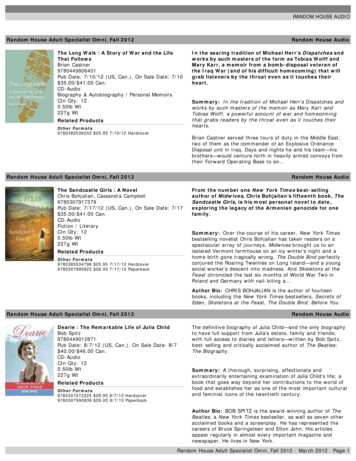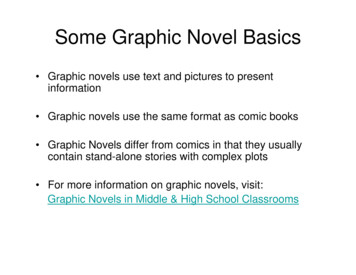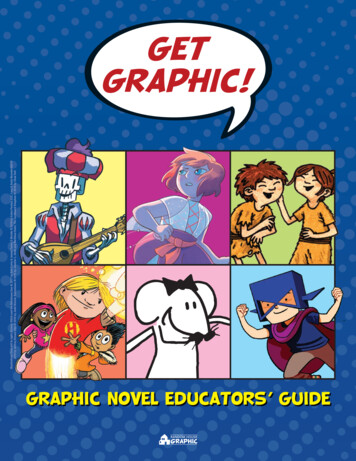
Transcription
Illustrations from left to right: Rickety Stitch and the Gelatinous Goo 2017 by Ben Costa & James Parks; 5 Worlds 2018 by Antzu Pantzu, LLC; Lucy & Andy Neanderthal 2016 by Jeffrey Brown; Hilo 2016 by Judd Winick; Babymouse 2015 by Jennifer L. Holm and Matthew Holm; The Cardboard Kingdom 2018 by Chad SellGETGRAPHIC!GRAPHIC NOVEL EDUCATORS’ GUIDE
GETGRAPHIC!INTRODUCTIONThe scaffolding of illustration in addition to thetext will make some abstract concepts moreconcrete. This may mean that concepts such asflashback, foreshadowing, and symbolism can bemore readily identified and understood. Graphicnovels can also be used for independent readingand as part of book talks and displays. Graphicnovel adaptations of traditional texts such asThe City of Ember and The Golden Compass canbe offered as alternative selections for students,especially those who may not be able to access amore traditional text. Finally, graphic novels canbe used to develop skills in visual literacy.Graphic novels have grown in popularity overthe past decade or two. Once a niche format,they are an increasingly important componentof classroom and library collections. Adaptationsof traditional texts such as The City of Emberand The Golden Compass are joining the storiesof Babymouse, Hilo, Lucy & Andy, and othercharacters from graphic novel series. Todaygraphic novels receive some of the highest awardsin the industry, including the Newbery and PrintzMedals from the American Library Association.Graphic novels can provide enjoyable andinformative reading experiences for a wide rangeof readers.HOW TO READ A GRAPHIC NOVELWHAT IS A GRAPHIC NOVEL?Do not assume that all readers will know how toread a graphic novel. Educators should take sometime to go over the structure of the format. Thediscussion questions on page 4 will help yourstudents get the most out of any graphic novel.Graphic novels are an extension of comic books.They tell stories using pictures in sequence,panels, speech balloons, text boxes, and otherconventions of the comic book form. The keydifference between illustrated books, picturebooks, and graphic novels is that graphic novelsare generally longer and are not serializedthe way comics are. Graphic novels have amore developed narrative than picture books;additionally, they differ from illustrated chapterbooks because the illustrations are an integralcomponent of the story. Because graphic novelsrely heavily on illustration to propel the narrative,they can be a great primer for struggling readers.HEAR FROM EDUCATORS WHOLOVE GRAPHIC NOVELS“Graphic novels are beloved by children of all ages,but they have proven to be an effective, engaging,and exciting format for my growing readers. Theyare complex, multilayered stories that invitereaders to imagine and infer. I find time and timeagain that graphic novels offer the hook someyoung people need to fall in love with reading.”—Aliza Werner, third-grade teacherWHY USE GRAPHIC NOVELSIN THE CLASSROOM?“Graphic novels . . . get kids excited about reading.They are the best of both worlds—text and visualsthat are not picture books. Kids want to readgraphic novels over and over again. Want a sight?Just watch them salivate when they hear anotherbook in a series will be released soon.”Like any traditional novel, a graphic novel tells astory. The literary elements of traditional storiesare present: plot, character, setting, theme, andnarrative arc. Figurative language, symbolism,and other literary devices are also present. Asteaching tools, graphic novels offer educatorsthe same possibilities as traditional texts.2—Stacey Rattner, K–5 librarian
Art 2015 by Jeffrey BrownImportant elements ofGRAPHIC NOVELS1. Color can be used in a variety of ways in graphic How do the panels interact with one another? A re some elements of the illustrations larger thanothers? Why or why not?novels. The City of Ember graphic novel usesdarker tones to help project a somber mood,while The Sand Warrior uses light colors tocreate an almost ethereal world. Color alsoplays an active role in the storytelling. The colorin Hilo changes when he is having a flashback.Here are a few questions to consider along withreaders: Which colors are predominant? What might the colors represent? What would happen if different colors were used? Why did the artist choose to use the colors they did?Describe the mood created.4. Frames can be used to contain text andillustration and create panels. What types of frames are used? D o the frames vary throughout the narrative or remainconsistent? Are there frames within frames? Why? I f the frames were removed, how might the storychange? I f the art sometimes breaks the borders of the frame,what might the artist be conveying with this technique?5. In graphic novels, speech balloons contain2. Line is a component of the art in a graphicdialogue and text boxes contain narration.These questions are valuable when talkingabout the text of graphic novels: D oes the text appear in black-and-white or color?Are different colors used? If so, why? Do the words differ in shape and size? H ow does the illustrator indicate different emotionsthrough the text? C onsider how the artist has differentiated dialogue andnarration. What techniques have they used?novel, and the direction of a line (horizontal,diagonal, vertical) can imply different things.A diagonal line might indicate movement orloss of balance. A horizontal line could meanrest or peace or calm, while a vertical linecould indicate not just height but strength.Readers should be able to determine if thedirection of an illustration or a panel or evena page is horizontal, vertical, or diagonal andwhy. Here are a few questions to consideralong with readers: Are lines thin or thick? Light or dark? How does the artist use lines to draw the readers’ eyesin a certain direction? How are lines used to frame the panels or to separatethe white space from the text and illustrations?6. Just as the work of Picasso and the cubistsdiffered from the work of Monet and theimpressionists, different artists use differentapproaches in their graphic novels. Thefollowing are some questions for discussion: W hat medium is being used? Are illustrations donewith colored pencil, watercolors, ink, or somethingelse? How does this affect the narrative? (Sometimesthis information can be found on the copyright page ofa book.) W hat is the style of the art? Are there elements oftechniques such as pointillism, impressionism, orrealism? Why do you think the artist chose this style?3. Composition is how the illustration is puttogether (composed). Size and placement aretwo critical components of composition, sothink about these questions in your explorationwith readers: What is in the center of each panel? At the top? At thebottom? What might the placement of objects signify?Prepared by Teri S. Lesesne, a professor in the Department of Library Science at Sam Houston State University, where she teaches classes in literature for children and young adults3
PAIR THESE GREAT GRAPHIC NOVELSWITH OTHER TEXTS IN YOUR CLASSROOM.THE HERO’S JOURNEYWhile reading The Odyssey, have students alsoread Rickety Stitch and the Gelatinous Goo Book 1:The Road to Epoli.Art 2017 by Ben Costa & James ParksDiscuss the elements of the heroic cycle in bothtexts and analyze similarities, differences, and theoverall effect of the texts. Then have students finda modern-day story that fits the archetype of ahero’s journey. They should consider heroes fromliterature, movies, newspapers, magazines,and comics.DYSTOPIAN SOCIETIESWhile reading The Giver, have students alsoread The City of Ember.Art 2012 by Niklas AskerDiscuss the ways in which the structures ofpower affect the main characters in each work.How are these the same or different from oursociety? Then have students investigate theways in which their lives would change if theywere to enter one of these dystopian societies.STORIES ABOUT FINDING YOURSELFWhile reading Wonder, have students also readThe Cardboard Kingdom.Art 2018 by Chad SellDiscuss the ways in which a person’s outwardappearance can differ from how they feel onthe inside, and how one’s outward appearancecan shape others’ perceptions of them. What isthe role dress-up and make-believe play in bothstories? Have students draw depictions of boththeir inner and outer selves. What’s different?What’s the same?4
Art 2017 by Antzu Pantzu, LLCMake Your Own Graphic NovelDRAW YOUR HEROES!Think of who your main characters are going to be,then draw them in the boxes. Next, answer questionsabout them so you can get to know them better!What is this hero’s name?What is this hero’s name?What is their favorite color?What is their favorite color?What is their favorite food?What is their favorite food?What is their secret talent?What is their secret talent?REPRODUCIBLE
Make Your Own Graphic NovelUse a combination of art and words to tell your story! Fill each panel with a different scene,and make sure to include speech bubbles so we’ll know which characters are saying what.Here are some questions you can answer to help you dream up your perfect story: Will ittake place on this planet or another? Are your main characters superheroes or normal kids?What kind of adventure will they go on? Only you know the answers!GETGRAPHIC!Write your graphic novel’s title here!REPRODUCIBLEArt 2018 by Chad SellLET YOUR IMAGINATION RUN WILD!
Art 2016 by Judd WinickFind the perfectgraphic-novel seriesfor your reader!by Mark Siegel and Alexis Siegel;illustrated by Xanthe Bouma,Matt Rockefeller, and Boya Sunby Ben Costa and James ParksPerfect for fans of Bone,Nimona, and AdventureTime, this series centersaround a singing skeletonon a mission to uncoverhis origins with the helpof his gelatinous sidekick.5 Worlds. 3 Unlikely Heroes.1 epic battle for the galaxy!This sci-fi/fantasy series isperfect for fans of Amulet,Star Wars, and Avatar: TheLast Airbender.by Judd WinickHilo is Dog Man meets Big Nate in outer space!It’s a hilarious and action-packed New York Timesbestselling series!by Chad Sell & Co.Perfect for fans of RainaTelgemeier, Roller Girl, andAwkward, a neighborhoodof kids transform ordinarycardboard into a magicalway to navigate theirreal-world issues.by JeffreyBrownby Jennifer L. Holm andMatthew HolmA laugh-out-loud graphic-novel series aboutNeanderthal siblings from the bestselling author ofthe Star Wars Jedi Academy series, Darth Vader andSon, and Vader’s Little Princess.Meet Babymouse in this hilarious, award-winningseries. Her dreams are big, her imagination is wild,and her whiskers are always a mess!7
Edited by Jennifer L. Holm, Matthew Holm, andJarrett J. KrosoczkaThree bust-your-gut-laughing graphic novelanthologies with original contributions from themost beloved names in graphic novels!by Ali-A and Cavan Scott;illustrated by AleksandarSotirovskiAli-A, the popularYouTube gamer, presentshis very own actionpacked graphic novel!by Jennifer L. Holm andMatthew Holmby Jarrett J. KrosoczkaDespite being single-celled organisms, Squishand his friends attend school, play sports, andparticipate in a wide variety of activities. Thoughthey face obstacles, they always find a solution totheir problems!Lunch Lady and her assistant, Betty, serve up morethan food to the Breakfast Bunch, a group of friendswho somehow become involved in all sorts ofadventures at school. From substitute teachers whoare really robots to evil librarians and crazed authors,it’s up to the kids and their crime-fighting Lunch Ladyto solve the cases and rescue the school.Check out these graphic adaptationsof some of our favorite novels:by Master Taekwon Lee and JeffreyNodelman; illustrated by Ethen BeaversThe Team Taekwondo seriescombines the appeal ofgraphic novels and martialarts to deliver action-filled,character-building stories.Each book also includesone free lesson at anyparticipating licensed ATAMartial Arts location.The City ofEmberThe GoldenCompassby Jeanne DuPrau;adapted byDallas Middaugh;illustrated byNiklas Askerby PhilipPullman;adapted byStéphaneMelchior and Clément OubrerieExperience this belovedclassic anew as artist NiklasAsker faithfully brings tolife the glare of the lamps,the dinginess of the streets,and the brilliance of thefirst sunrise.The graphic noveladaptation of one ofthe most celebratedbooks of all time isnow complete! Thisedition contains all threevolumes—the entire story.Random House Children’s Books School and Library Marketing 1745 Broadway New York, NY 10019 8/18RHTeachersLibrarians.com8
Graphic novels are an extension of comic books. They tell stories using pictures in sequence, panels, speech balloons, text boxes, and other conventions of the comic book form. The key difference between illustrated books, picture books, and graphic novels is that graphic novels are generally longer and are not serialized the way comics are.

